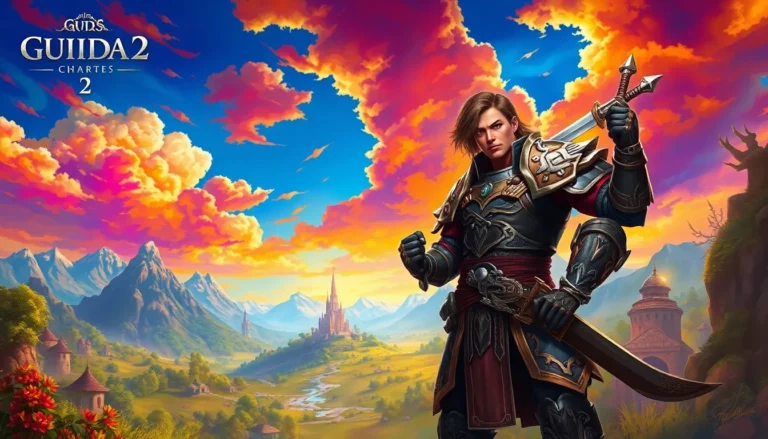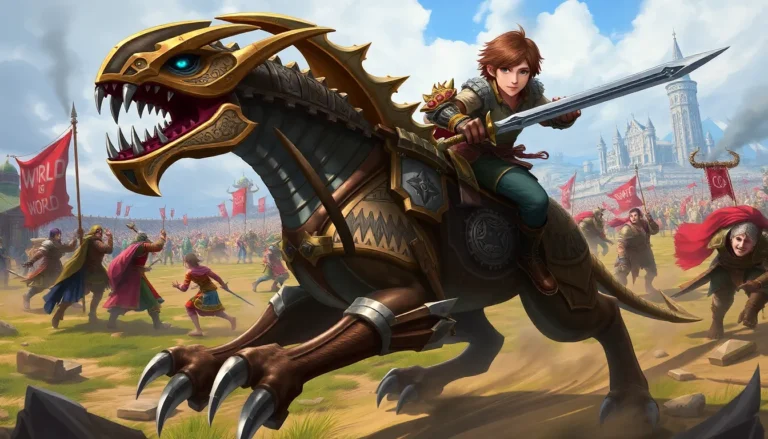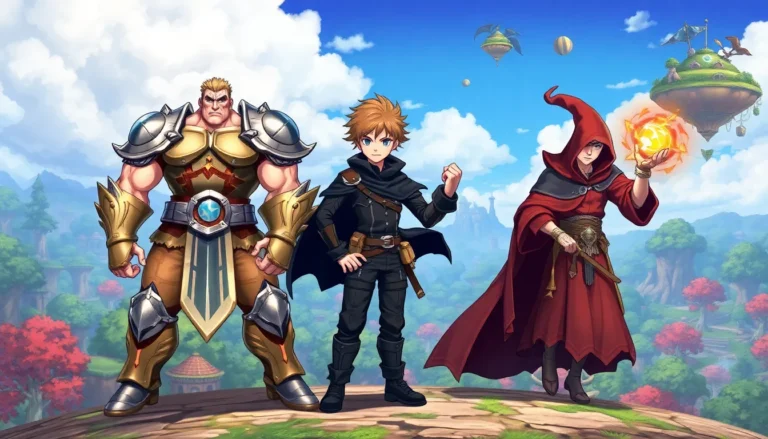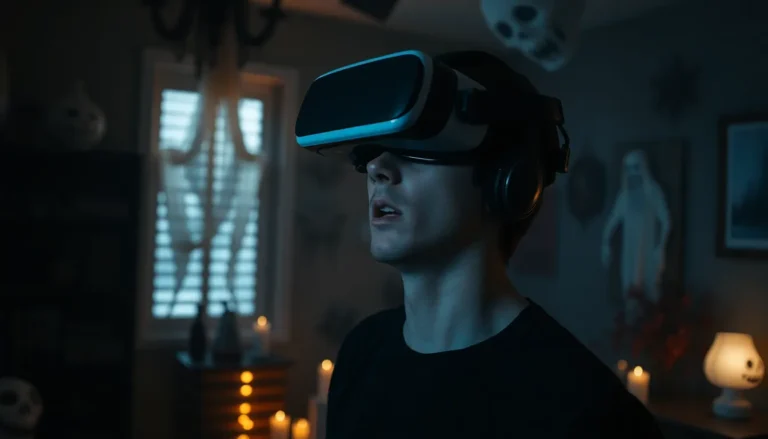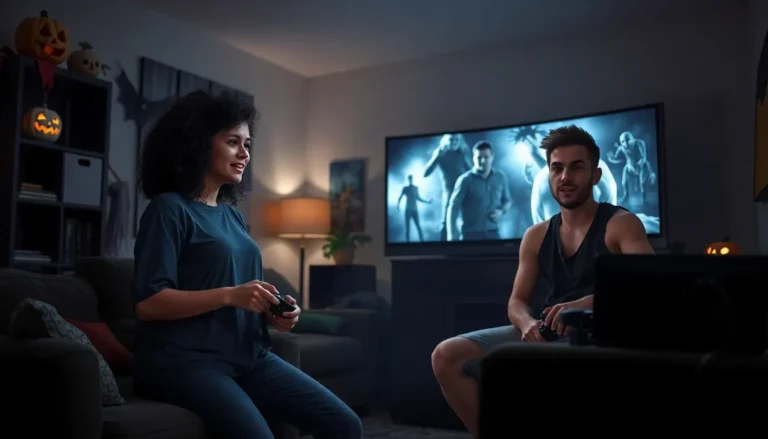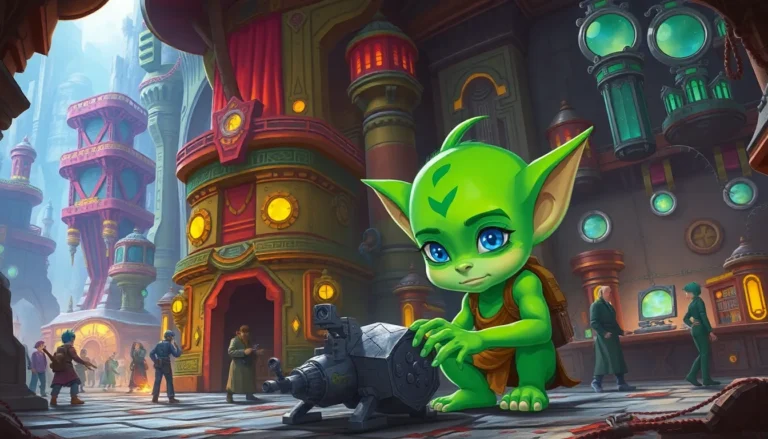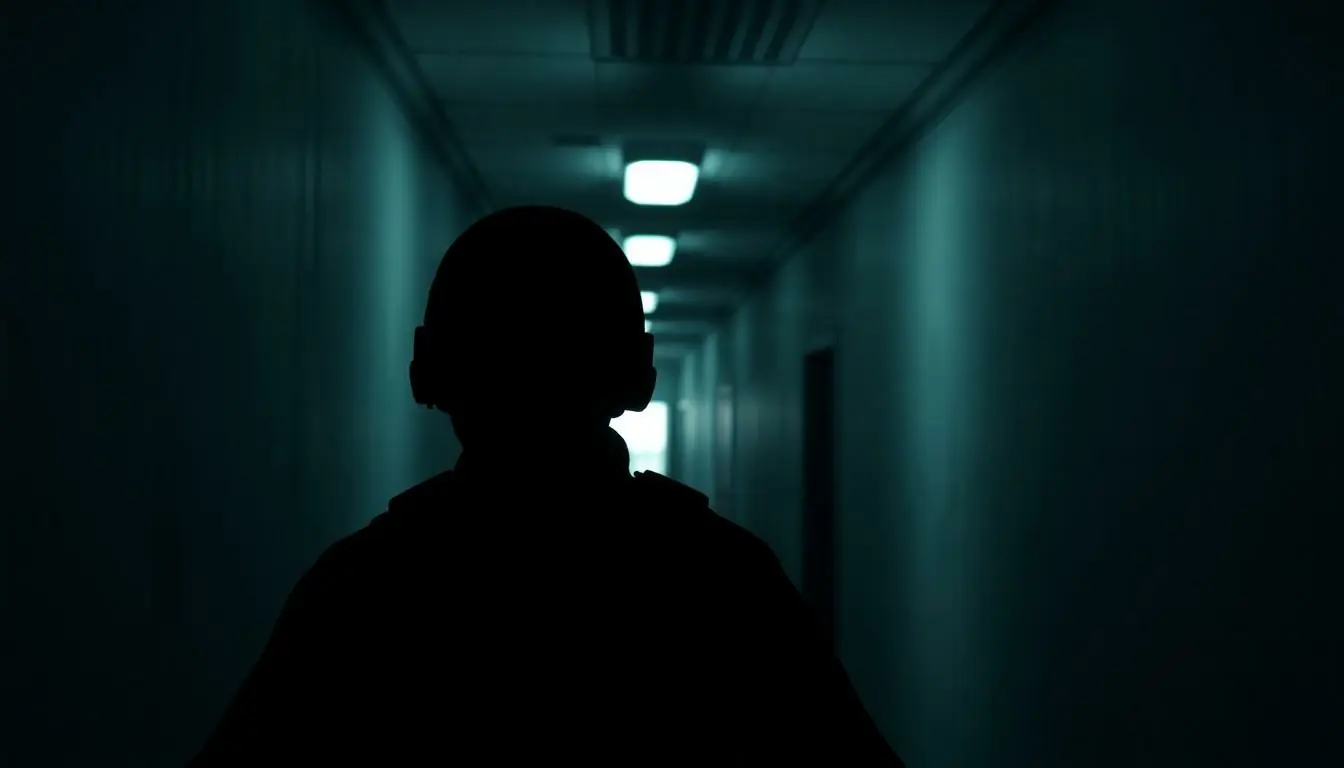Table of Contents
ToggleIn the dim glow of a flickering screen, first-person horror games deliver an adrenaline rush like no other. They plunge players into terrifying worlds where every creak and shadow sends shivers down the spine. Imagine being chased by a ghostly figure while your heart races faster than a caffeinated squirrel. These immersive experiences don’t just play with fear; they redefine it.
From navigating haunted mansions to escaping nightmarish creatures, first-person horror games invite players to confront their deepest fears. With each jump scare and chilling encounter, they create a unique blend of thrill and dread that keeps players coming back for more. So, grab your flashlight and prepare for a spine-tingling adventure, because in the world of first-person horror, the only thing scarier than the monsters lurking in the dark is the realization that you might just be the next victim.
Overview of First Person Horror Games
First-person horror games deliver an immersive experience that places players directly into terrifying narratives. These games utilize a first-person perspective to enhance the sense of vulnerability, allowing individuals to engage fully with their surroundings. The camera view creates intense emotional reactions as players explore dark corridors and eerie landscapes.
Creatures and enemies often appear unexpectedly. Players confront nightmarish foes that stalk them, contributing to the atmosphere of dread. Sound design plays a crucial role; chilling audio cues amplify tension and alert players to impending danger.
Game mechanics frequently involve resource management, puzzle-solving, and stealth. Players navigate environments while managing limited supplies, which adds to the thrill. These elements challenge decision-making under pressure, forcing individuals to choose between fighting the antagonist or fleeing for survival.
Notable titles within this genre include Amnesia: The Dark Descent, Outlast, and Resident Evil 7: Biohazard. Each game presents a unique storyline and atmosphere, showcasing varying degrees of horror.
The psychological aspects of these games often tap into deep fears, creating experiences that linger long after gameplay ends. Anticipation of the unknown propels players forward, encouraging exploration while heightening anxiety.
First-person horror games cater to specific audiences seeking adrenaline-pumping escapades. They deliver a blend of tension and storytelling, captivating players with chilling visuals and haunting narratives. Engaging with these games allows individuals to face their fears in a safe environment, making it a popular choice for horror enthusiasts.
Key Elements of First Person Horror Games
First-person horror games hinge on several key elements that enhance suspense and engagement.
Immersive Environments
Immersive environments capture players’ attention with rich, detailed settings. Dark corridors, eerie houses, and abandoned institutions become focal points for exploration. Players often feel as if they step into another reality, with visuals that evoke unease. Sound design amplifies these feelings; footsteps, creaking doors, and distant screams contribute to the chilling atmosphere. Interaction with the environment creates a tangible connection, pulling players deeper into the narrative. These richly crafted worlds transform ordinary spaces into haunting arenas for psychological battles.
Psychological Tension
Psychological tension distinguishes first-person horror games from other genres. Characters often confront their deepest fears, leading to profound emotional experiences. Game mechanics enhance this tension, requiring players to balance resource management and stealth to survive. Unexpected encounters with monstrous adversaries heighten stress levels, forcing players to navigate with caution. Physical sensations often mimic real-life fears, making players question their safety. As the story unfolds, players discover layers of chilling narrative, resulting in an intense mix of dread and anticipation. This deep-seated psychological approach creates lasting impressions long after gameplay ends.
Popular First Person Horror Games
First-person horror games captivate players with their immersive narratives and spine-chilling encounters. Several notable titles stand out in this genre, each offering unique features and terrifying experiences.
Game 1: Amnesia: The Dark Descent
Amnesia: The Dark Descent revolutionized psychological horror with its gripping story. Players navigate an eerie, crumbling castle filled with dark secrets. Resource management plays a crucial role, as players must conserve oil for their lanterns and avoid frightening creatures. The atmosphere grows tense with chilling sound design, amplifying fear and anxiety with every step.
Game 2: Outlast
Outlast immerses players in a nightmarish asylum as they uncover the horrors within. Stealth mechanics dominate gameplay, requiring players to avoid detection by monstrous inmates. A camera equipped with night vision becomes essential for navigating the dark corridors. The first-person perspective heightens vulnerability, making every encounter feel life-threatening.
Game 3: Resident Evil 7: Biohazard
Resident Evil 7: Biohazard reinvents the iconic series by embracing a first-person format. Players assume the role of Ethan Winters, trapped in a horrifying plantation home. The game features puzzle-solving, exploration, and resource scarcity, adding layers of tension. Breathtaking visuals and a chilling soundtrack create an engaging horror experience, making it a top choice among enthusiasts.
Impact on Gaming Culture
First-person horror games significantly influence gaming culture, reshaping how players perceive fear in interactive storytelling. Emotional engagement peaks when individuals confront their darkest fears within these immersive experiences. Players often share their terror, creating a sense of community around shared experiences and reactions.
Community engagement thrives through streaming platforms like Twitch, where viewers watch others navigate terrifying scenarios. Games like Amnesia: The Dark Descent ignite discussions among fans regarding narrative depth and gameplay mechanics. Conventions and online forums also buzz with chatter, allowing gamers to dissect game elements and share strategies.
Developers prioritize unique mechanics that enhance the horror experience. Resource management and stealth tactics draw players into immersive settings, further deepening their connection to the game world. In avoiding direct combat, games compel players to think strategically while escaping fearsome enemies. This tension heightens emotional investment and influences future game design across genres.
Critically acclaimed titles demonstrate the lasting impact of this genre. Outlast exemplifies the power of perspective by incorporating mechanics that force players into vulnerable situations. Resident Evil 7: Biohazard revitalizes a beloved franchise, showcasing how first-person views can introduce fresh narratives while maintaining intense horror.
Cultural references emerge, elevating the genre’s stature in mainstream gaming. Memes and viral content often originate from standout moments in these games, making horror gameplay a significant component of online culture. As a result, first-person horror games continue to resonate with audiences, pushing boundaries in storytelling and interactive engagement.
Conclusion
First-person horror games have carved a unique niche in the gaming landscape. They offer players a visceral experience that heightens fear and suspense through immersive storytelling and engaging mechanics. The blend of psychological tension and resource management challenges players to confront their deepest fears while navigating terrifying environments.
As this genre continues to evolve, it captivates both seasoned gamers and newcomers alike. The community around first-person horror games thrives on shared experiences and discussions, further enriching the overall experience. With each new release, developers push the boundaries of fear, ensuring that these games remain a thrilling choice for those seeking adrenaline-fueled adventures.

